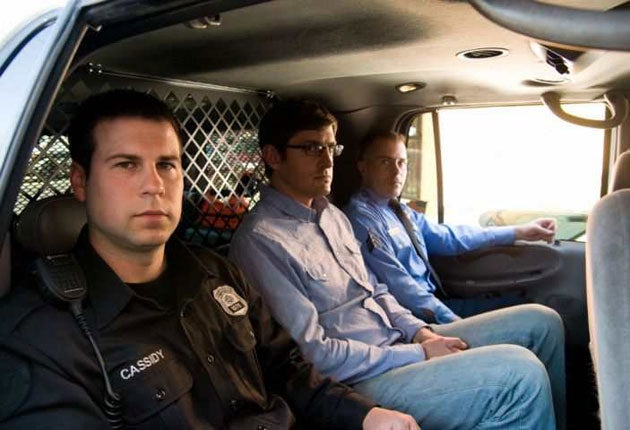Is this a golden age for documentaries?
Agenda-setting, powerful and remarkably cheap to make, current affairs programmes are having an unexpected renaissance, discovers Ed Howker

So, it's carnage out there. ITV analysts are predicting a 12 per cent decline in advertising revenue in 2009, which equals a £100m decline in profits. Channel 4 is trimming 150 jobs, which will be quite a saving, but perhaps not enough to fill their £150m funding gap.
Meanwhile the BBC, inured to market vicissitudes, is struggling to convince the other players in what Channel 4's chief executive Andy Duncan calls the "public service ecology" that its plan to share iPlayer and other services will help them address the predicted £235m funding crisis in public service broadcasting.
While this debate over medium-term funding rages, the terrestrial broadcasters have a more immediate dilemma: how to continue delivering original content with even fewer resources. The solution may usher in a new period of creativity and insight from British programme makers – by sparking a renaissance in current affairs and documentary programme making. There are several reasons why broadcasters are looking with renewed enthusiasm at documentary making, but one stands out: it's cheap.
The average prime-time current affairs documentary can be made for as little as £150,000 per hour and many are made for less. Drama costs around £100,000 more, with a typical costume drama requiring at least £500,000 per hour of screened footage. It's easy to see that there is a substantial saving to be made by airing documentary factual programming instead of drama, and goes some way to explaining why the award-winning current-affairs department at Channel 4 was left untouched by the first round of cuts made by executives there. Indeed, the success of Sky Real Lives' broadcast of Right to Die?, made by Oscar-winning Canadian director John Zaritsky, which garnered blanket press coverage, demonstrated that even broadcasters little used to creating agenda-setting current affairs programming can still harness the medium with an emotive subject.
Audience shares for current affairs programming have struggled in the past few years. Peak-time broadcasts of Channel 4's Dispatches and the BBC's Panorama (which, when it was relaunched, was unhelpfully scheduled at the same time as the C4 programme) have remained at around one and three million viewers respectively. However, the continued emphasis on fast-turnaround zeitgeist-y special editions are boosting viewing figures. Panorama's examination of the high-profile kidnapping of Shannon Matthews pulled in the programme's highest audience of the year, with 5.7m viewers earlier this month. ITV's Tonight with Trevor McDonald is well placed to offer this kind of programming and Dispatches has established some fast-turnaround teams, so it seems inevitable that all three flagship current-affairs programmes will be paying more attention to these shows in future.
Another growth area is so-called "immersion television" of which the most famous proponent is Louis Theroux. His programmes have grown increasingly hard-hitting in the past few years, swapping B-list celebrity subjects for prisons, gangs and Nazis, but they are not the only factual documentaries that are crossing into current-affairs territory. Examine the BBC 3 series Blood, Sweat and T-shirts, broadcast in May 2008, which followed six fashion addicts from Britain's high streets to India's cotton fields and clothes factories. Viewers watched as the protagonists attitudes to throwaway fashion changed. The "immersion" format which, rather than providing polemical narrative, invites the viewer to form their own conclusions, will almost certainly become a more regular feature in television schedules.
Having said that, broadcasters ignore agenda-setting original programming at their own cost. Programmes such as The Secret Policeman and Dispatches: Undercover Mosque demonstrate the enormous power of public service broadcasting for running investigations and breaking exclusives. These stories are difficult, expensive and time-consuming to obtain, film and bring to air, but they reward channels by providing output that serves not just "the public interest" but the interests of society and democracy as well.
In the coming years, it is very possible that viewing figures for these programmes will improve too, because viewers tend to respond better to current affairs programming at times of uncertainty. In the months following 9/11, it was Panorama that grew its audience most dramatically in the UK by providing context for the destruction of the twin towers. So too, as our banking sector and then our economy falter, will current affairs programming be sought out by viewers to provide context and insight. As Mary Ewert, whose husband's death Sky broadcast, wrote in The Independent last week: "He was keen to have it shown, because when death is hidden and private, people don't face their fears about it. They don't acknowledge that it is going to happen, they don't reflect on it, they don't want to face it."
The very best factual and current-affairs programming does just that: forcing society to confront truths that are too often ignored. And if it saves some money in the meantime, that can only be a good thing.
Join our commenting forum
Join thought-provoking conversations, follow other Independent readers and see their replies
Comments